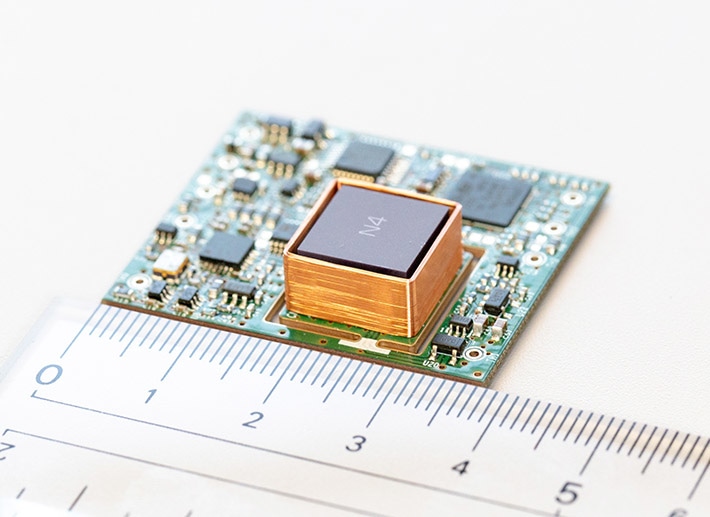Feb 20 2019
An ultra-low-power atomic clock (ULPAC) for small satellites that can enable next-generation communication systems beyond 5G has been created by researchers from Tokyo Tech, Ricoh co., and The National Institute of Advanced Industrial Science and Technology.
 Prototype of the atomic clock (33 mm x 38 mm x 9 mm). A newly developed compact ULPAC, mounted on small satellites, automobiles, and smartphones, accelerates the realization of seamless and on-demand mobile communication networks. (Image credit: Kenichi Okada)
Prototype of the atomic clock (33 mm x 38 mm x 9 mm). A newly developed compact ULPAC, mounted on small satellites, automobiles, and smartphones, accelerates the realization of seamless and on-demand mobile communication networks. (Image credit: Kenichi Okada)
The device designed by the researchers outshines the existing industry standards in different benchmarks, such as stability, size, and power consumption.
With the continuous evolution of existing telecommunication technologies, the speed and absolute amount of data needed by users across the globe increase as a result. One potential technique for fulfilling this ever-increasing demand is by commissioning a swarm of micro- or nano-scale satellites that revolve around the planet in low earth orbit. But, such a constellation of satellites needs exceptionally accurate synchronization to a global time standard. To this end, a highly accurate atomic clock is required on board each unit.
Since traditional atomic clocks are very huge (measuring 155–755 cm3) and need excessive power (of up to 10 W) to be installed on small satellites, scientists have created quantum atomic clocks with considerably minimized size and power consumption by using a technique known as coherent population trapping.
Using this technique, scientists at Tokyo Tech, in collaboration with Ricoh Co. Ltd. and the National Institute of Advanced Industrial Science and Technology (AIST), have recently developed a completely functional atomic clock that outperforms the existing industry benchmarks. With respect to power consumption, the phase-locked loop in their device—a vital component in quantum atomic clocks—consumes power that is an order of magnitude less compared to that of devices reported earlier.
Apart from its low power consumption, the proposed atomic clock surpasses devices reported at present in two other critical aspects: Allan deviation and volume occupied. Not only is it most important to effectively use the space available on board micro/nano-scale satellites, but it is also necessary to ensure that the final design can be fit to a very small volume. Regarding Allan deviation, it is a scale of the stability of a clock’s frequency; a low Allan deviation relates to a highly stable and reliable clock.
The atomic clock created by the researchers seems fine in these two aspects as well.
The prototype of our atomic clock achieves a long-term Allan deviation of 2.2×10−12 at τ = 105 s (the industry standard is 3.0×10−10 at τ = 1 s) while occupying a volume of only 15.4 cm3 (slightly smaller than the smallest currently available atomic clock).
Kenichi Okada, Associate Professor, Tokyo Tech.
The researchers stated that there is scope for improvement.
The total power consumption is 59.9 mW, which is mainly because of the microcontroller unit in this prototype and can be further reduced by using custom logic circuitry.
Kenichi Okada, Associate Professor, Tokyo Tech.
While the Tokyo Tech researchers worked on reducing the power consumption of the device, Ricoh and AIST made efforts to improve its Allan deviation. The final outcome of this partnership is a prototype of a high-potential atomic clock that further pushes existing benchmarks so that next-generation telecommunications systems, like those beyond 5G, can turn out to be a reality.